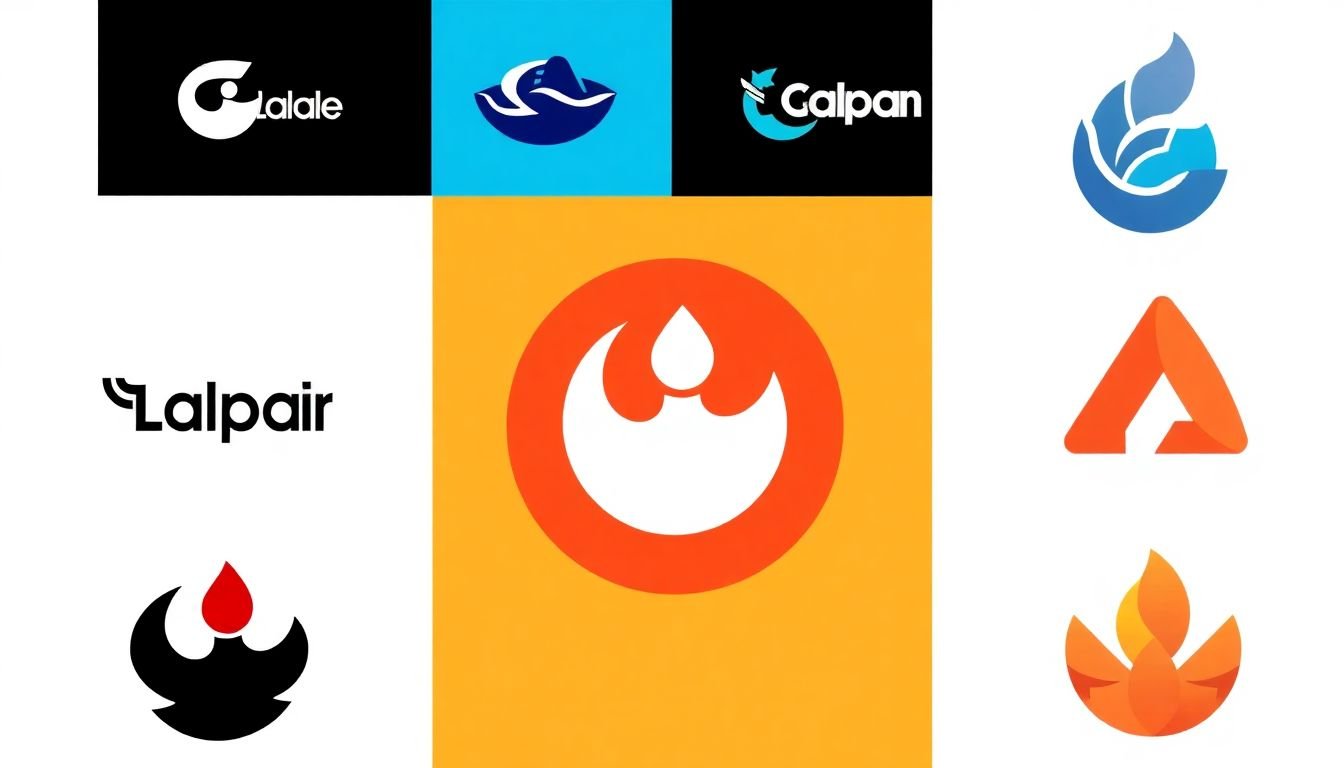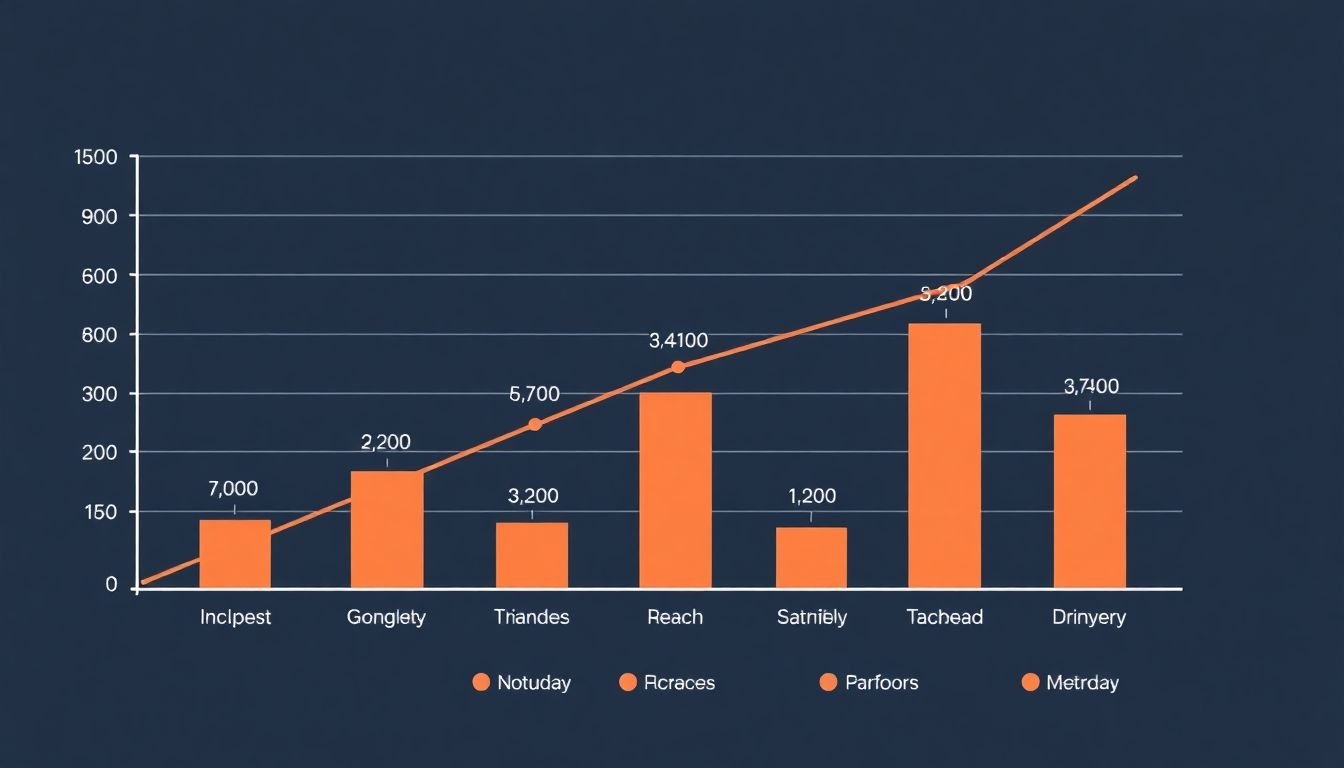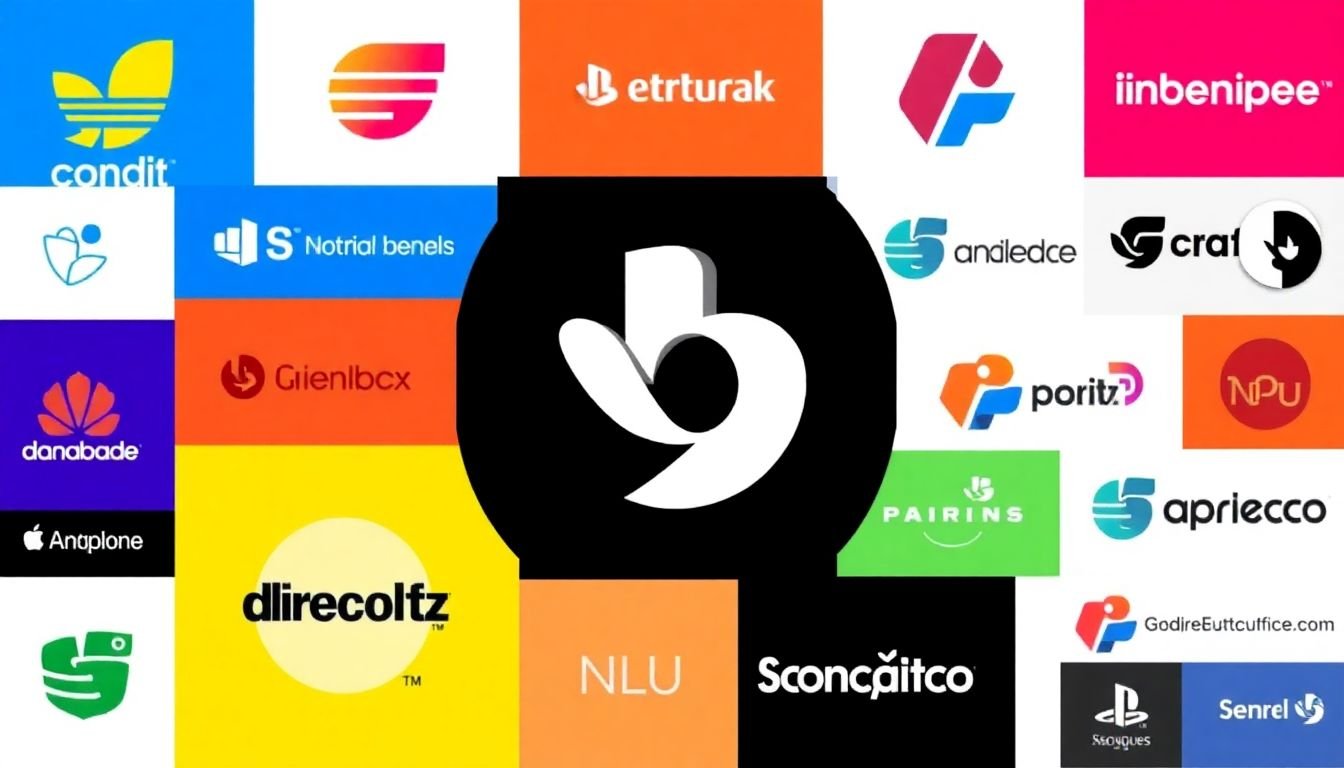
Table of Contents
In the digital age, where consumers flit between smartphones, tablets, desktops, and even smart refrigerators, the question that haunts marketers is: How can we maintain brand consistency across this vast, ever-evolving landscape? The answer lies in the art of flexible branding, a concept that’s as crucial as it is complex. Welcome to the multi-platform era, where brands must be as adaptable as they are recognizable. But how do you create brand guidelines that can dance to the beat of this diverse digital drum? Let’s dive in.
Agree with me when I say, maintaining brand consistency across multiple platforms is no walk in the park. According to a study by Forrester, 75% of brands struggle with this very challenge. It’s like trying to fit a square peg into a round hole, except the holes keep changing shape! But fear not, dear reader, for this article promises to shed light on the dark corners of multi-platform marketing and provide a roadmap to creating flexible branding guidelines that can weather any digital storm.
So, what can you expect to gain from this exploration? By the end of this article, you’ll understand how to craft brand guidelines that are as robust as they are adaptable. You’ll learn how to navigate the complex terrain of multi-platform marketing, and discover strategies to ensure your brand remains recognizable, no matter where it appears. We’ll delve into real-life examples, explore the science behind flexible branding, and provide practical tips that you can implement immediately. So, are you ready to embrace the art of flexibility and create brand guidelines that can conquer the multi-platform era? Let’s get started!
Navigating the Digital Landscape with Adaptive Branding
In the ever-evolving digital landscape, where consumer attention spans are shorter than a goldfish’s, and algorithms dictate visibility, adaptive branding has emerged as a strategic compass for businesses. This dynamic approach to branding is not merely about creating a logo or a catchy tagline, but about crafting a brand that can navigate the digital terrain with agility and resilience. It’s about understanding that the digital consumer is not a static entity, but a fluid, multifaceted individual who interacts with brands across multiple platforms and devices. Adaptive branding, therefore, is about being where your audience is, speaking their language, and evolving with their needs and preferences. It’s about creating a brand that is not just a static image, but a dynamic entity that can adapt to the ever-changing digital landscape. This is not an easy task, but with the right strategy, it can transform a brand into a digital chameleon, capable of blending into any environment and standing out in the most crowded of spaces.

The Multi-Platform Marketing Mandate
In the dynamic digital landscape of today, the necessity of multi-platform marketing has become not just an advantage, but a mandate for businesses to thrive. The consumer of the 21st century is a digital nomad, flitting from one screen to another, from desktop to mobile, from social media to email, and from video to podcasts. This diverse consumer behavior has created a fragmented market, making it crucial for businesses to adopt a multi-platform marketing strategy.
The first step in understanding this mandate is acknowledging the varied digital habits of consumers. According to a recent study, the average American spends over 6 hours a day on their mobile devices, with activities ranging from social media scrolling to online shopping. Meanwhile, desktop usage is still significant, particularly for tasks that require more screen real estate, like video editing or online gaming. Furthermore, the rise of smart speakers and voice assistants has introduced a new platform for marketing
- audio.
Meeting customers where they are is not just about being present on multiple platforms, but also about understanding the unique language and norms of each platform. For instance, Twitter is known for its brevity and real-time updates, while Instagram is all about visual storytelling. A one-size-fits-all approach simply won’t work in this context.
Implementing a multi-platform marketing strategy also involves ensuring consistency across all platforms. This means maintaining a consistent brand voice, messaging, and visual identity. It’s about creating a seamless customer experience, regardless of the platform they’re using to interact with your brand.
In conclusion, the multi-platform marketing mandate is not just about casting a wide net, but about understanding the nuances of each platform and using that understanding to create meaningful connections with customers. It’s about being where your customers are, speaking their language, and providing value in a way that resonates with them. In the digital age, this is not a luxury, but a necessity.

Understanding Flexible Branding
In the dynamic landscape of today’s business world, the concept of branding has evolved significantly, giving rise to the notion of ‘flexible branding’. Unlike traditional branding approaches that focus on a static, one-size-fits-all identity, flexible branding is a strategic approach that allows brands to adapt, evolve, and respond to changing market conditions, consumer behaviors, and cultural shifts.
The importance of flexible branding lies in its ability to future-proof a brand. It enables businesses to stay relevant, agile, and resilient in the face of uncertainty. By embracing change and remaining open to new ideas, flexible branding ensures that a brand can continue to connect with its audience, even as their needs, preferences, and expectations evolve.
One of the key benefits of flexible branding is its ability to foster brand authenticity. In an era where consumers crave genuine connections, flexible branding allows brands to be more human, more relatable, and more authentic. It encourages brands to be transparent, to engage in meaningful conversations with their audience, and to demonstrate a genuine understanding of their customers’ needs and values.
Consider, for instance, the case of Airbnb. Initially positioned as a platform for renting out spare rooms, Airbnb’s flexible branding approach has allowed it to expand its offerings to include unique, local experiences and even luxury hotel listings. By remaining open to change and adapting its brand to meet evolving consumer needs, Airbnb has successfully grown from a niche startup to a global hospitality powerhouse.
Another advantage of flexible branding is its potential to drive innovation. By encouraging brands to continually question, challenge, and reinvent themselves, flexible branding fosters a culture of innovation. It prompts brands to explore new markets, develop new products or services, and adopt new technologies, all of which can drive business growth and competitive advantage.
However, implementing a flexible branding strategy is not without its challenges. It requires a brand to be clear about its core values and purpose, as these provide the anchor that guides the brand’s evolution. It also necessitates a degree of courage, as it involves stepping away from the safety of established brand identities and embracing the unknown.
In conclusion, flexible branding is not just a buzzword; it’s a strategic necessity in today’s fast-paced, ever-changing business environment. By embracing flexibility, brands can build stronger, more resilient relationships with their customers, drive innovation, and ensure their long-term success. It’s not about changing for the sake of change, but about evolving in response to the world around us, remaining true to our core, and always striving to be better.

The Role of Brand Guidelines in Flexibility
In the dynamic world of business, maintaining a consistent brand identity while allowing for flexibility can often feel like a delicate balancing act. This is where brand guidelines step in, acting as the unsung heroes that enable brands to adapt and evolve without losing their essence. Think of brand guidelines as the rulebook that ensures everyone on your team is playing the same game, even when the playing field changes.
Well-defined brand guidelines provide a robust framework that allows for adaptation. They establish clear parameters for what is and isn’t acceptable, creating a safety net that encourages creativity without compromising the brand’s core identity. It’s like having a GPS for your brand
- it allows you to explore different paths and detours, but always ensures you’re heading in the right direction.
Let’s break down how this works with a simple analogy. Imagine you’re a chef in a high-end restaurant, and your brand is the signature dish you’re known for. Your brand guidelines are the recipe that ensures every plate that leaves the kitchen is a perfect representation of your culinary masterpiece. Now, you might want to experiment with new ingredients or presentation styles to keep things fresh, but the core elements
- the ones that make your dish unique
- remain unchanged. This is the power of brand guidelines
- they allow for innovation and flexibility, but always keep the brand’s essence at the heart of the dish.
In practical terms, this means your brand guidelines should clearly outline your brand’s mission, vision, and values. They should define your brand’s personality, tone of voice, and visual identity. But they should also provide room for maneuver, perhaps by suggesting different styles or approaches that can be used in different contexts. It’s all about finding the sweet spot between consistency and flexibility.

Adapting Visual Elements: Logo, Color, Typography
In the dynamic world of branding, adaptability is key, especially when it comes to visual elements like logos, colors, and typography. These components must seamlessly transition across various platforms, from websites and social media to packaging and merchandise, without losing their essence or confusing the audience. Let’s delve into how some brands have mastered this art of flexible branding.
The logo, often the face of a brand, needs to be versatile. Take Nike, for instance. Its iconic ‘Swoosh’ logo maintains its simplicity and recognizability across different sizes and mediums. It’s bold and unmistakable on a billboard, yet subtly elegant on a tiny shoe tag. Similarly, Google’s logo might seem static, but its ability to transform into various fun, festive, and even interactive designs for special occasions shows its adaptability.
Colors, too, must be adaptable. Coca-Cola’s classic red is instantly recognizable, but it’s not afraid to experiment with other colors for special editions or seasonal campaigns. For example, its ‘Share a Coke’ campaign featured bottles with names printed in various colors, making them more appealing and shareable.
Typography also plays a crucial role. Airbnb’s logo is a great example of adaptable typography. The ‘A’ and ‘b’ are interconnected, forming a simple, recognizable symbol that can stand alone or be part of the full wordmark. This allows it to scale up or down, and be used in various contexts, from a tiny app icon to a massive billboard.
In conclusion, successful brands understand the importance of adaptable visual elements. By maintaining consistency in their essence while allowing for flexibility in their form, they ensure their brand is recognizable and appealing across all platforms.

Adapting Tone of Voice: Consistency in Variety
Maintaining a consistent tone of voice across various platforms and audiences is a delicate balancing act for brands. It’s like being a chameleon, adapting to different environments while staying true to your core identity. The key lies in creating a flexible tone of voice guide that allows for variety without sacrificing consistency.
Firstly, understand your brand’s DNA. What are its core values, personality traits, and mission? These should form the bedrock of your tone of voice, remaining constant regardless of the platform or audience.
Next, identify your target audiences and the platforms they frequent. Each group may require a slightly different approach. For instance, a brand targeting young, tech-savvy consumers might adopt a more casual, conversational tone on social media, while maintaining a professional, informative tone on its website.
To create a flexible tone of voice guide, consider the following steps:
-
Establish a Tone of Voice Matrix:
- Map out your target audiences and the platforms they use. Beside each, note the specific tone of voice required to resonate with that audience on that platform.
Develop Tone of Voice Pillars:
- Based on your brand’s DNA, create a set of tone of voice pillars that can be adapted. For example, if your brand is ‘friendly’ and ‘helpful’, these traits can be expressed in different ways across platforms. On social media, it might manifest as ‘chatty’ and ‘supportive’, while on a website, it could be ‘informative’ and ‘approachable’.
Provide Adaptation Guidelines:
Give clear instructions on how to adapt the tone of voice for different scenarios. This could include specific language to use or avoid, as well as examples of ‘do’s and don’ts’.
Remember, the goal is not to sound like a robot, repeating the same phrases ad nauseam. Instead, aim for a consistent essence that shines through in every interaction, like a unique fingerprint. With a flexible tone of voice guide, you can maintain that essence while speaking the language of each audience.

The Art of Responsive Design
In the dynamic digital landscape of today, the art of responsive design has emerged as a critical component of multi-platform marketing. Responsive design is not merely an aesthetic choice, but a strategic necessity that ensures a consistent and engaging user experience across a myriad of devices and platforms. This approach, pioneered by Ethan Marcotte, is built on the foundation of flexible grids, flexible images, and CSS media queries, allowing websites to adapt to different screen sizes and resolutions.
Imagine, if you will, a world where your meticulously crafted marketing campaign is viewed on a sprawling desktop monitor, a compact tablet, and a tiny smartphone screen. Without responsive design, the user experience could vary drastically, with crucial elements becoming distorted or lost in translation. This inconsistency can lead to a frustrating user experience, potentially driving customers away.
Responsive design ensures that your marketing message remains clear and compelling, regardless of the device it’s viewed on. It’s like having a chameleon-like website that can adapt to its environment, maintaining its core identity while adjusting its appearance to suit the platform. This consistency fosters trust and engagement, as users appreciate the seamless, intuitive experience.
Moreover, responsive design is not just about aesthetics; it’s also about functionality. A responsive design ensures that your website’s features and functionalities work seamlessly across all devices. This includes everything from navigation menus to forms and interactive elements. In essence, responsive design is about creating a harmonious, user-friendly experience that transcends the boundaries of individual devices.
In the realm of multi-platform marketing, responsive design is not just a nice-to-have feature; it’s a must-have. It’s the key to unlocking a consistent, engaging user experience that can drive conversions and build brand loyalty. So, the next time you’re planning a marketing campaign, remember the art of responsive design
- it’s the secret to making your message shine, regardless of the screen it’s viewed on.

Measuring Success: KPIs for Multi-Platform Marketing
Measuring success in multi-platform marketing is a multifaceted endeavor, much like the strategies themselves. It’s crucial to track key performance indicators (KPIs) that provide insights into the effectiveness of your flexible branding efforts across various channels. Let’s dive into the world of multi-platform marketing metrics.
The first step in measuring success is to identify your objectives. Are you aiming to increase brand awareness, drive traffic to your website, or boost sales? Your KPIs should align with these goals. Once you’ve established your objectives, you can start tracking the following KPIs:
-
Reach and Impressions:
- Measure how many unique users have seen your content. This can be tracked on platforms like Facebook, Instagram, and Twitter.
Engagement:
- This includes likes, shares, comments, and clicks. It indicates how well your content resonates with your audience.
Click-Through Rate (CTR):
- Measures the number of users who click on your content or ads. A high CTR suggests that your content is compelling and relevant.
Conversion Rate:
- Tracks the percentage of users who take a desired action, such as making a purchase or signing up for a newsletter, after clicking through to your website.
Website Traffic:
- Measure the number of visitors to your website, broken down by referral source. This can help you understand which platforms are driving the most traffic.
Cost Per Acquisition (CPA):
This measures the cost of acquiring a new customer. It’s calculated by dividing the total cost of your marketing efforts by the number of new customers acquired.
Regularly reviewing and analyzing these KPIs will provide valuable insights into what’s working and what’s not. It’s essential to continually refine your strategies based on these insights to maximize your marketing efforts. After all, the key to successful multi-platform marketing is not just being present on multiple channels, but being effective on them.

Case Studies: Brands That Mastered Flexible Branding
In the ever-evolving landscape of business, some brands have stood out by embracing the power of flexibility in their branding strategies. Let’s delve into two compelling case studies that illustrate how adaptability can lead to remarkable results.
The first brand that mastered flexible branding is Airbnb. Initially launched as a platform for renting air mattresses in spare rooms, Airbnb’s branding has evolved dramatically to accommodate its expanding services. The company’s logo, initially a simple wordmark, transformed into a stylized ‘A’ box that could be filled with various designs, symbolizing the diversity of its listings. This flexible logo, along with the tagline ‘Belong Anywhere,’ allowed Airbnb to connect with a broader audience, transcending the boundaries of traditional hospitality. The results? Airbnb became a verb in the travel industry, with over 7 million listings in 81,000 cities and 191 countries, and a market capitalization of over $100 billion.
Another brand that has successfully implemented flexible branding is Dove. Known for its beauty products, Dove took a bold step in 2004 with its ‘Campaign for Real Beauty,’ featuring women of diverse ages, shapes, and ethnicities. This flexible approach to branding challenged traditional beauty standards and resonated with consumers. Dove’s sales increased by $1.5 billion within a decade, and the campaign won numerous awards. Moreover, Dove expanded its flexible branding to include men and babies, further cementing its position as a brand that celebrates diversity and inclusivity.
These case studies demonstrate that flexible branding is not about constant change for the sake of it, but rather about evolving with your audience and market. By staying adaptable and true to their core values, these brands have achieved remarkable success.

The Future of Branding: Embracing Fluidity
In the dynamic, ever-shifting digital landscape, the future of branding is not about rigid, static identities, but rather, fluid and adaptable ones. Brands today must be as versatile as the digital platforms they inhabit, ready to pivot and evolve at a moment’s notice. This is not just a suggestion, but a necessity in an era where consumer attention spans are short, and trends can change overnight.
The key to staying ahead lies in embracing fluidity and continuous adaptation. This means moving away from the traditional ‘set it and forget it’ approach to branding, and instead, adopting a more agile mindset. Brands should be prepared to iterate, experiment, and even redefine their identities based on real-time feedback and data.
But how does one achieve this? Here are a few steps:
-
Understand Your Audience:
- Fluid branding starts with a deep understanding of your audience. Use data and insights to create detailed buyer personas, and continually update these as your audience evolves.
Be Platform-Agnostic:
- Different platforms require different approaches. Embrace this by creating content tailored to each platform, rather than trying to force a one-size-fits-all strategy.
Encourage Experimentation:
- Foster a culture of experimentation within your brand. This could mean trying out new content formats, engaging with emerging platforms, or even reimagining your brand’s visual identity.
Listen and Adapt:
- Feedback is the lifeblood of fluid branding. Use it to inform your strategies, and be ready to adapt your brand based on what you’re hearing.
Stay True to Your Core:
While fluidity is key, it’s also important to maintain a consistent core. Your brand’s values, mission, and unique identity should remain constant, even as the rest of your branding evolves.
In essence, the future of branding is not about creating a perfect, static image, but rather, a dynamic, ever-changing entity that can move with the times. It’s about embracing the chaos, and using it to create a brand that’s not just relevant, but also resilient.